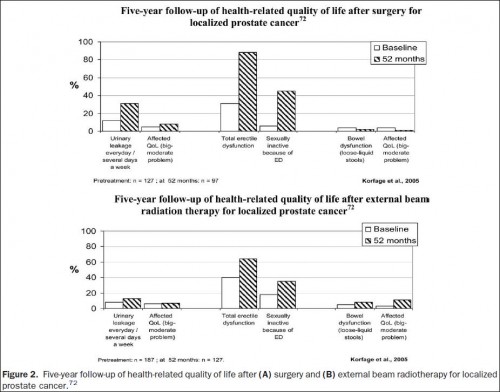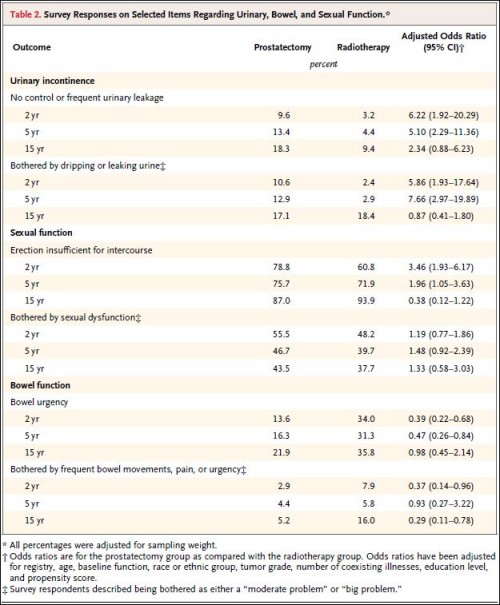On this blog, we’ve written a ton about prostate cancer and testing and treatment thereof. A few posts discuss quality of life outcomes (QOL) associated with treatment, like impotence and incontinence. Two papers I read (or reread) recently cover those issues in a particularly helpful way, comparing QOL outcomes between treatment modalities. Moreover, they do so in some fairly comprehensive charts, which I share below.
First, from “Prostate Cancer: Epidemiology and Health-related Quality of Life,” by David Penson et al. (Urology, 2008) and citing prior work by Tracey Krupski et al. (Urology, 2000):
Next, from “Long-Term Functional Outcomes after Treatment for Localized Prostate Cancer,” by Matthew Resnick et al. (NEJM, 2013), a paper I’ve referenced before:
Naturally, mortality is also a relevant outcome, but we’ve covered that extensively, particularly as it pertains to prostate cancer screening. Here’s one such post. Here’s another. All the rest under the prostate cancer tag. But, really, if you’re interested in this stuff, just go read the recent systematic review by Richard Hoffman and colleagues. It’s ungated, but only for a short time. I think it’s awesome.




